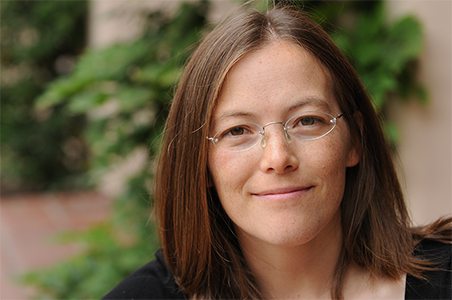NEWS
How Meeko Oishi is Making the World a Better Place

UNM
3 minutes
By
Brittney Van Der Werff
UNM Electrical and Computer Engineering Associate Professor Meeko Oishi has had a busy year. In March she was chosen to participate in the highly-selective Defense Study Science Group sponsored by DARPA. Her collaborative work on light therapy and circadian rhythms is rocking the world of health sciences. And last month she was awarded a coveted National Science Foundation (NSF) Cyber-Physical Systems grant to improve how humans interact with complex technical systems.
Entitled, “Cognitive Autonomy for Human CPS: Turning Novices into Experts,” the $5.5 million NSF award began October 1, 2019, with the goal of making “autonomous systems responsive not just to the physical state of the system, but also to the human’s cognitive state,” Dr. Oishi explained in the official press release.
As a member of the NM EPSCoR SMART Grid Center Architecture research team, Dr. Oishi, along with her students Vignesh Sivaramakrishnan (PhD) and Yuliya Matlashova (MS), explore humans operating complex systems in continually changing situations. For example, imagine driving your car (a system you are operating) on the highway (a constantly changing situation), and you need to change lanes. To do so safely, you must consider your current speed, the speed of the cars around you, and the location of your fellow vehicles. The action also requires a certain level of trust that your car and the adjacent travelers will behave normally. Luckily, you are equipped with sensors—eyes and ears—that have evolved to observe dynamic situations. Your brain has also evolved to expertly process the resulting visual and auditory input, discarding the irrelevant data and giving priority to the mission-critical information you need to safely changing lanes.
But what if you are operating a system that cannot be seen or heard? Smart grid operators must complete “lane changes” in situations infinitely more complex than navigating a New Mexico highway, relying on system sensors instead of eyes and ears. However, unlike our brains, current autonomous technology cannot effectively synthesize the massive quantities of sensor information in a way we can easily understand and act on. This is where Dr. Oishi and her team come in. Together they are constructing algorithms capable of refining a metaphorical firehose of information in a way that informs (without overloading) human operators. In the simplest sense, she is working to develop tools to better integrate humans into autonomous systems like smart grids.
Despite her latest successes, Dr. Oishi remains down-to-earth, curious, and thankful. The recent Cyber-Physical Systems award is a singular achievement that will improve the way we interact with autonomous systems. And yet, Dr. Oishi frames the topic in a way that highlights the collaboration and support she has experienced:
"I’m quite excited about the potential application of these methods to problem solving in smart grids—these are such complex and interesting systems—and I am grateful for the opportunity through EPSCoR to pursue a new line of inquiry, as well as to support junior faculty in my department. It’s wonderful to be part of a program that is at its core about institution building.”